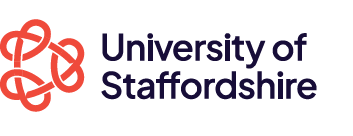Module Descriptors

DIGITAL COMPOSITING FOR VISUAL EFFECTS
FVFX40521
Key Facts
Digital, Technology, Innovation and Business
Level 4
30 credits
Contact
Leader: Benjamin Beard
Email: benjamin.beard@staffs.ac.uk
Hours of Study
Scheduled Learning and Teaching Activities: 72
Independent Study Hours: 228
Total Learning Hours: 300
Assessment
- Rotoscoping, Paint and Cleanup weighted at 50%
- Keying and CG Integration weighted at 50%
Module Details
Module Learning Outcomes
1. ANALYSE AN IMAGE SEQUENCE TO DETERMINE SUITABLE TECHNIQUES FOR PRODUCING A MATTE IMAGE.
Analysis
2. DEMONSTRATE THE ABILITY TO USE INDUSTRY STANDARD PRACTICES TO CREATE A ROTOSCOPED SEQUENCE.
Problem Solving
3. DEMONSTRATE A KNOWLEDGE OF THE AESTHETIC AND TECHNICAL CONSIDERATIONS REQUIRED WHEN INTEGRATING ELEMENTS FROM DIFFERENT VISUAL SOURCES.
Knowledge and Understanding
4. EVALUATE COMPLETED SHOTS IN ORDER TO IDENTIFY WEAKNESSES AND DISCUSS APPROPRIATE SOLUTIONS.
Reflection
Analysis
2. DEMONSTRATE THE ABILITY TO USE INDUSTRY STANDARD PRACTICES TO CREATE A ROTOSCOPED SEQUENCE.
Problem Solving
3. DEMONSTRATE A KNOWLEDGE OF THE AESTHETIC AND TECHNICAL CONSIDERATIONS REQUIRED WHEN INTEGRATING ELEMENTS FROM DIFFERENT VISUAL SOURCES.
Knowledge and Understanding
4. EVALUATE COMPLETED SHOTS IN ORDER TO IDENTIFY WEAKNESSES AND DISCUSS APPROPRIATE SOLUTIONS.
Reflection
Module Additional Assesstment Details
Coursework 1 50% consisting of:
• A set of shots demonstrating rotoscoping techniques (LO 2)
• A set of shots demonstrating paint and cleanup techniques (LO 3)
• A log book showing development work, analysis and reflection on the completed work. (LO 4)
Coursework 2 50% consisting of:
• A shot demonstrating greenscreen keying techniques (LO 1)
• A shot demonstrating CG compositing and integration techniques (LO 3)
• A log book showing development work, analysis and reflection on the completed work. (LO 4)
PLEASE NOTE ALTERNATIVE ASSESSMENTS FOR Semester 1 2020/21 DUE TO COVID-19 AS FOLLOWS: Coursework 1 (25%), Coursework 2 (25%), Coursework 3 (25%), Coursework 4 (25%)
• A set of shots demonstrating rotoscoping techniques (LO 2)
• A set of shots demonstrating paint and cleanup techniques (LO 3)
• A log book showing development work, analysis and reflection on the completed work. (LO 4)
Coursework 2 50% consisting of:
• A shot demonstrating greenscreen keying techniques (LO 1)
• A shot demonstrating CG compositing and integration techniques (LO 3)
• A log book showing development work, analysis and reflection on the completed work. (LO 4)
PLEASE NOTE ALTERNATIVE ASSESSMENTS FOR Semester 1 2020/21 DUE TO COVID-19 AS FOLLOWS: Coursework 1 (25%), Coursework 2 (25%), Coursework 3 (25%), Coursework 4 (25%)
Module Indicative Content
Students will cover the following topics:
- 2D Tracking
- Rotoscoping
- Patching and cleanup
- Integration of 3D passes
- Creation of mattes
- Advanced Keying techniques
- Understanding alpha channel premultiplication and channel maths
- Mathematics for Compositing
- Importance in recognising and using correct colour spaces
- Basic scripting to automate processes
- 2D Tracking
- Rotoscoping
- Patching and cleanup
- Integration of 3D passes
- Creation of mattes
- Advanced Keying techniques
- Understanding alpha channel premultiplication and channel maths
- Mathematics for Compositing
- Importance in recognising and using correct colour spaces
- Basic scripting to automate processes
Module: Web Descriptor
Compositing is a core visual effects technique and represents the end of the visual effects pipeline. This module develops an understanding the science and technology that underpins the compositing process. Students will be required to assemble shots from multiple image sequences and to use their knowledge of compositing to put these together effectively.
They will also be shown industry standard practices for matte generation and rotoscoping technique and will be assessed on their ability to demonstrate these on image sequences that will challenge their abilities.
They will also be shown industry standard practices for matte generation and rotoscoping technique and will be assessed on their ability to demonstrate these on image sequences that will challenge their abilities.
Module Learning Strategies
1 Hour Lecture/demonstration per week for 8 weeks per semester
2 Hour Lab session/tutorial per week for 8 weeks per semester
3 hour Lab based assignment surgery for 4 weeks per semester
2 Hour Lab session/tutorial per week for 8 weeks per semester
3 hour Lab based assignment surgery for 4 weeks per semester
Module Texts
Rotoscoping: Techniques and Tools for the Aspiring Artist, Benjamin Bratt, (2011), Focal Press
Digital Compositing for Film and Video, (Third Ed), Steve Wright, (2011), Focal Press
The VES Handbook of Visual Effects: Industry Standard VFX Practices and Procedures, Jeffrey Okun, Susan Zwerman, (2010), Focal Press
Digital Compositing for Film and Video, (Third Ed), Steve Wright, (2011), Focal Press
The VES Handbook of Visual Effects: Industry Standard VFX Practices and Procedures, Jeffrey Okun, Susan Zwerman, (2010), Focal Press
Module Resources
Software:
• Nuke
• PTGUI
• PFTrack
Camera Equipment:
• Sony PMW-F55 Digital Cinema camera
• Grip and Lighting
Facilities:
• Greenscreen Studio
• GVE Specialist Lab
• Nuke
• PTGUI
• PFTrack
Camera Equipment:
• Sony PMW-F55 Digital Cinema camera
• Grip and Lighting
Facilities:
• Greenscreen Studio
• GVE Specialist Lab